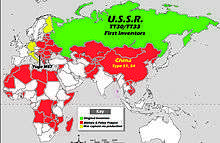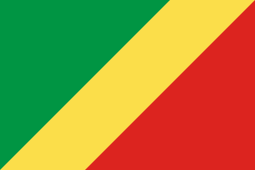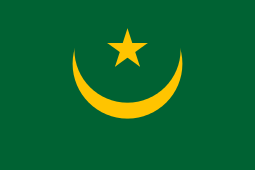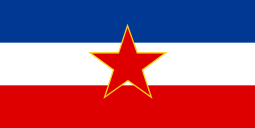TT pistol
| TT | |
|---|---|
|
A Soviet-produced TT-33 pistol made in 1937 | |
| Type | Semi-automatic pistol |
| Place of origin | Soviet Union |
| Service history | |
| In service | 1930–present |
| Used by | See Users |
| Wars |
Spanish Civil War World War II Korean War Chinese Civil War Vietnam War Laotian Civil War Cambodian Civil War Cambodian-Vietnamese War Sino-Vietnamese War Soviet war in Afghanistan Yugoslav Wars Cambodian–Thai border stand-off Syrian Civil War and numerous others |
| Production history | |
| Designer | Fedor Tokarev |
| Designed | 1930 |
| Manufacturer | Tula Arsenal, Izhevsk Arsenal, Norinco, Femaru, FB „Radom”, Cugir Arsenal, Zastava Arms, FÉG |
| Produced | 1930–1952[1] |
| Number built | 1,700,000 |
| Variants | TT-30, TT-33, TTC, M48, M48 Tokagypt, M57, M70, M70, R-3, Type 51, Type 54, Type 68 |
| Specifications | |
| Weight | 854 g (30.1 oz) |
| Length | 194 mm (7.6 in) |
| Barrel length | 116 mm (4.6 in) |
| Height | 134 mm (5.3 in) |
|
| |
| Cartridge | 7.62×25mm Tokarev |
| Action | Short recoil actuated, locked breech, single action |
| Muzzle velocity | 480 m/s (1,575 ft/s) |
| Effective firing range | 50 m |
| Feed system | 8-round detachable box magazine |
| Sights |
Front blade, rear notch 156 mm (6.1 in) sight radius |
The TT-30 (Russian: 7,62-мм самозарядный пистолет Токарева образца 1930 года, 7,62 mm Samozaryadnyj Pistolet Tokareva obraztsa 1930 goda, "7.62 mm Tokarev self-loading pistol model 1930") is a Russian semi-automatic pistol. It was developed in the early 1930s by Fedor Tokarev as a service pistol for the Soviet military to replace the Nagant M1895 revolver that had been in use since Tsarist times, though it ended up being used in conjunction with rather than replacing the M1895. It served until 1952, when it was replaced by the Makarov pistol.
Development
In 1930, the Revolutionary Military Council approved a resolution to test new small arms to replace its aging Nagant M1895 revolvers.[3] During these tests, on 7 January 1931, the potential of a pistol designed by Fedor Tokarev was noted. A few weeks later, 1,000 TT-30s were ordered for troop trials, and the pistol was adopted for service in the Red Army.[4]
But even as the TT-30 was being put into production, design changes were made to simplify manufacturing. Minor changes to the barrel, disconnector,[5] trigger and frame were implemented, the most notable ones being the omission of the removable hammer assembly and changes to the full-circumference locking lugs. This redesigned pistol was the TT-33.[4] Most TT-33s were issued to officers. The TT-33 was widely used by Soviet troops during World War II, but did not completely replace the Nagant.
Design details
Externally, the TT-33 is very similar to John Browning's blowback operated FN Model 1903 semiautomatic pistol, and internally it uses Browning's short recoil tilting-barrel system from the M1911 pistol. In other areas the TT-33 differs more from Browning's designs — it employs a much simpler hammer/sear assembly than the M1911. This assembly is removable from the pistol as a modular unit and includes machined magazine feed lips preventing misfeeds when a damaged magazine was loaded into the magazine well.[6] Soviet engineers made several alterations to make the mechanism easier to produce and maintain, most notably the simplifications of the barrel's locking lugs, allowing fewer machining steps. Some models use a captive recoil spring secured to the guide rod which does depend on the barrel bushing to hold it under tension. The TT-33 is chambered for the 7.62×25mm Tokarev cartridge, which was itself based on the similar 7.63×25mm Mauser cartridge used in the Mauser C96 pistol. The 7.62×25mm cartridge is powerful, has an extremely flat trajectory, and is capable of penetrating thick clothing and soft body armor. Able to withstand tremendous abuse, large numbers of the TT-33 were produced during World War II and well into the 1950s. In modern times the robust TT-33 has been converted to many extremely powerful cartridges including .38 Super and 9×23mm Winchester. The TT-33 omitted a safety catch other than the half cock notch which rendered the trigger inoperable until the hammer was pulled back to full cock and then lowered manually to the half cock position. Many imported variants have manual safeties added, which vary greatly in placement and function.
Variants
The Wehrmacht captured a fair number of TT-33s and issued them to units under the Pistole 615(r) designation. This was made possible by the fact that Russian 7.62 mm Model 1930 Type P cartridges were nearly identical to the German 7.63×25mm Mauser cartridge. Therefore, German ammunition could be used in captured Russian arms, but not vice versa. Due to much higher pressures, the Russian cartridges should never be used in the German Mauser pistols. Such use could be very dangerous.[6]
Interarms marketed World War II-surplus Russian-made Tokarevs in Europe and the United States as the Phoenix. They had new wooden grips with a phoenix design on them and were overstamped INTERARMS on the barrel. Later gun laws banned their sale due to their lack of a safety.
Foreign production
The TT-33 was eventually replaced by the 8-round, 9×18mm Makarov PM pistol in 1952. Production of the TT-33 in Russia ended in 1954, but copies (licensed or otherwise) were also made by other countries. At one time or another most communist or Soviet bloc countries made a variation of the TT-33 pistol.
China
The TT pistol was copied in China as the Type 51, Type 54, M20, and TU-90.[7]
Norinco, the People's Liberation Army's state armaments manufacturer in China, manufactured a commercial variant of the Tokarev pistol chambered in the more common 9×19mm Parabellum round, known as the Tokarev Model 213, as well as in the original 7.62×25mm caliber.
The 9mm model features a safety catch, which was absent on Russian-produced TT-33 handguns. Furthermore, the Model 213 features the thin slide grip grooves, as opposed to the original Russian wide-types. The 9mm model is featured with a magazine well block mounted in the rear of the magazine well to accept 9mm type magazines without frame modification.
The Norinco model in current production is not available for sale in the United States due to import prohibitions on Chinese firearms, although older handguns of the Model 213 type imported in the 1980s and 1990s are common.
7.62×25mm ammo is also rather inexpensive and locally produced or imported from China, also made by Norinco.
Hungary
Hungary rebarreled the TT to fire 9×19mm Parabellum as the M48, as well as an export version for Egypt known as the Tokagypt 58 which was widely used by police forces there.[6]
North Korea
North Korea manufactured them as the Type 68[8] or M68.[6]
Pakistan

Both legal and illegal TT pistols are still manufactured in various Pakistani Khyber Pass factories.[9]
Poland
Poland produced their own copies as the PW wz.33, manufactured from 1947 to 1959.[6]
Romania
Romania produced a TT-33 copy as the TTC, or Cugir Tokarov well into the 1950s. These have been made available for commercial sale in great numbers in recent years. However, to be importable into the United States, a trigger blocking safety was added.
Vietnam
The K54 is a copy of the TT-33.[10] An updated version known as the K14-VN is made by Factory Z111, which has an increased capacity of 13 rounds.[10][11] Research and development started in 2001.[12] The K14-VN began to see service with PAVN forces on May 10, 2014.[13]
Yugoslavia (Serbia)

Zastava produces an improved version of the TT-33 designated M57.
The M57 has a longer grip and longer 9-round magazine (versus 8 rounds in TT). a 9×19mm version is also made by Zastava designated M70A as well as a compact version M88.
Zastava manufactures a sub compact pistol M70 (a.k.a.Pčelica ("little bee")) roughly based on TT design in 7,65mm Browning (.32 ACP) or 9mm Kratak (.380 ACP).
As of 2012 M57A, M70A and M88A are imported into the U.S. by Century International Arms.
Usage

The TT-33 is still in service in the Bangladeshi and North Korean armed forces today while police in Pakistan still commonly use the TT pistol as a sidearm, though unofficially, as it is being replaced by modern 9 mm Beretta and SIG pistols. In China, the TT-33 pistol is also occasionally supplied to the People's Armed Police and People's Liberation Army under the name Type 54.
The Tokarev is popular with pistol collectors and shooters in the West because of its ruggedness and reliability.
However, some complaints include poor-quality grips (which are often replaced by the wrap-around Tokagypt 58 grips) and a hand grip which extends at a vertical angle awkward for many Western shooters. Another complaint is the poor placement of the post-production safeties installed to comply with US import regulations; many shooters disassemble the pistols, remove them and restore the Tokarevs to the original configuration.
Nonetheless, the Tokarev, as well as its variants in 9mm, is renowned for its simplicity, power and accuracy.[14]
Users

 Afghanistan[15]
Afghanistan[15] Albania:[15] Albanian police and RENEA.
Albania:[15] Albanian police and RENEA. Algeria[15]
Algeria[15] Angola[15]
Angola[15] Armenia[15]
Armenia[15] Azerbaijan[15]
Azerbaijan[15] Bangladesh: Uses Chinese Type 54 copy.[16]
Bangladesh: Uses Chinese Type 54 copy.[16] Belarus[15]
Belarus[15] Benin[15]
Benin[15] Bosnia-Herzegovina[15]
Bosnia-Herzegovina[15] Bulgaria[15]
Bulgaria[15] Cambodia[15]
Cambodia[15] Chad[15]
Chad[15] People's Republic of China: Produced in large numbers as the Type 54.[17]
People's Republic of China: Produced in large numbers as the Type 54.[17] Congo-Brazzaville[15]
Congo-Brazzaville[15] Croatia[15]
Croatia[15] East Germany[15] Issued in small numbers to Volkspolizei (Peoples Police) in the early 1950s, replaced by Makarov PM in late 50s.
East Germany[15] Issued in small numbers to Volkspolizei (Peoples Police) in the early 1950s, replaced by Makarov PM in late 50s. Egypt: Produced from the 1950s.[18]
Egypt: Produced from the 1950s.[18] Equatorial Guinea[15]
Equatorial Guinea[15] Finland: Captured TT-33 pistols were carried by Finnish soldiers and partisans during the Winter War (1939-1940) and Continuation War (1941-1944) with the USSR. It was nicknamed the "Star Pistol" (tähti-pistooli)[19] due to the large Red Army star embossed on the grip panels. Although large numbers were acquired, the Finnish military never produced ammunition or spares for them because they were in a non-standard caliber.[19]
Finland: Captured TT-33 pistols were carried by Finnish soldiers and partisans during the Winter War (1939-1940) and Continuation War (1941-1944) with the USSR. It was nicknamed the "Star Pistol" (tähti-pistooli)[19] due to the large Red Army star embossed on the grip panels. Although large numbers were acquired, the Finnish military never produced ammunition or spares for them because they were in a non-standard caliber.[19]  Georgia[15]
Georgia[15] Guinea[15]
Guinea[15] Guinea-Bissau[15]
Guinea-Bissau[15] Hungary: Produced locally.[20]
Hungary: Produced locally.[20] Iraq[15]
Iraq[15] Kyrgyzstan[15]
Kyrgyzstan[15] Laos[15]
Laos[15] Libya[15]
Libya[15] Lithuania: Lithuanian Armed Forces.[15][21]
Lithuania: Lithuanian Armed Forces.[15][21] Madagascar[15]
Madagascar[15] Malta[15]
Malta[15] Mauritania[15]
Mauritania[15] Moldova[15]
Moldova[15] Mongolia[15]
Mongolia[15] Montenegro[15]
Montenegro[15] Morocco[22]
Morocco[22] Mozambique[15]
Mozambique[15].svg.png) Nazi Germany[6] Used captured pistols
Nazi Germany[6] Used captured pistols North Korea: Produced locally as the Type 68.[20][23]
North Korea: Produced locally as the Type 68.[20][23] Pakistan: Used by Pakistan Army,[24] Security Guards and Police.
Pakistan: Used by Pakistan Army,[24] Security Guards and Police. Poland: Produced locally in the FB „Radom” arms factory.[20] Used by military and law enforcement groups; replaced by the P-64 pistol in the 1960s.
Poland: Produced locally in the FB „Radom” arms factory.[20] Used by military and law enforcement groups; replaced by the P-64 pistol in the 1960s. Romania: Produced locally at the Cugir factory under the designation "TTC".[15][20]
Romania: Produced locally at the Cugir factory under the designation "TTC".[15][20] Russian Federation[15]
Russian Federation[15] Serbia[15]
Serbia[15] Sierra Leone[15]
Sierra Leone[15] Somalia[15]
Somalia[15] Soviet Union[17]
Soviet Union[17] Syria[15]
Syria[15] Uganda[15]
Uganda[15] Vietnam[15]
Vietnam[15] Yugoslavia: Produced locally.[17][20]
Yugoslavia: Produced locally.[17][20] Zambia[15]
Zambia[15] Zimbabwe[15][25]
Zimbabwe[15][25]
See also
References
- ↑ Monetchikov, S. TT: Small Russian miracle. "Bratishka" magazine website. December 2007
- ↑ Article about the picture on Russian language Wikipedia. Retrieved on 2 March 2013.
- ↑ World.guns.ru. "Tokarev TT pistol (USSR/Russia)". Retrieved 2008-01-29.
- 1 2 Cruffler.com (March 2001). "Polish M48 (Tokarev TT-33) Pistols". Retrieved 2008-01-29.
- ↑ Tokarev, Vladimir (2000). "Fedor V. Tokarev". Retrieved 2008-01-29.
- 1 2 3 4 5 6 Bishop, Chris (2006). The Encyclopedia of Small Arms and Artillery. Grange Books. pp. 13–14. ISBN 978-1-84013-910-5.
- ↑ Kokalis, Peter. Weapons Tests And Evaluations: The Best Of Soldier Of Fortune. Boulder, Colorado, USA: Paladin Press. p. 96. ISBN 978-1-58160-122-0.
- ↑ "Modern Firearms". Retrieved 14 November 2014.
- ↑ "The Way of the Gun: The legendary gunsmiths of Darra Adam Khel". Riaz Ahmed. Express Tribune.
- 1 2 http://world.guns.ru/handguns/hg/vietnam/k14vn-e.html
- ↑ http://baodatviet.vn/anh-nong/suc-manh-dan-sung-viet-nam-tu-san-xuat-3237315/?p=3
- ↑ http://baodatviet.vn/anh-nong/suc-manh-dan-sung-viet-nam-tu-san-xuat-3237315/?p=2
- ↑ http://kienthuc.net.vn/quan-su-viet-nam/dieu-chua-biet-ve-sung-ngan-k14-viet-nam-san-xuat-466574.html
- ↑ AlphaRubicon.com, Information concerning the Norinco Type 213, its disassembly, and handling
- 1 2 3 4 5 6 7 8 9 10 11 12 13 14 15 16 17 18 19 20 21 22 23 24 25 26 27 28 29 30 31 32 33 34 35 36 37 38 39 40 41 Jones, Richard D. Jane's Infantry Weapons 2009/2010. Jane's Information Group; 35 edition (January 27, 2009). ISBN 978-0-7106-2869-5.
- ↑ "Bangladesh Military Forces - BDMilitary.com". Bangladesh Military Forces - BDMilitary.com. Retrieved 14 November 2014.
- 1 2 3 Marchington, James (2004). The Encyclopedia of Handheld Weapons. Lewis International, Inc. ISBN 1-930983-14-X.
- ↑ Hogg, Ian (2002). Jane's Guns Recognition Guide. Jane's Information Group. ISBN 0-00-712760-X.
- 1 2 JAEGER PLATOON: FINNISH ARMY (1918 - 1945) > PISTOLS (Page 2): Mauser M/96, Nagant and TT-33
- 1 2 3 4 5 "Modern Firearms". Retrieved 14 November 2014.
- ↑ "Lietuvos kariuomenė :: Ginkluotė ir karinė technika » Pistoletai". Retrieved 14 November 2014.
- ↑ "Weapon". Retrieved 14 November 2014.
- ↑ https://fas.org/nuke/guide/dprk/nkor.pdf
- ↑ "Pakistan Army".
- ↑ Peter Abbott (1986). Modern African Wars (1) 1965-80. p. 10. ISBN 0850457289.
External links
| Wikimedia Commons has media related to TT (pistol). |
- The Official Fedor Tokarev Guns And Rifles Website
- Modern Firearms
- 13 photos of TT33 and its parts
- TT-33 Pictorial